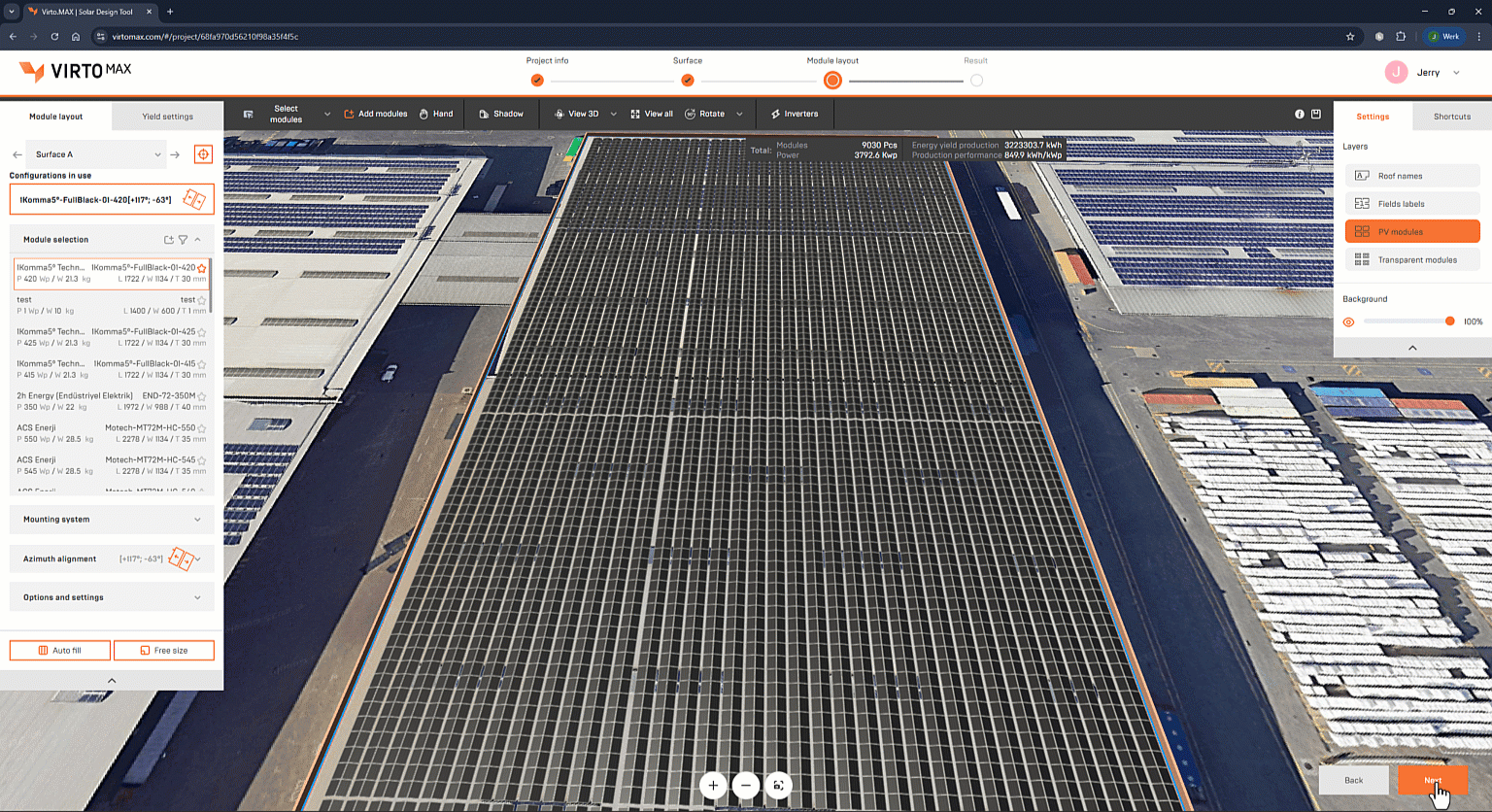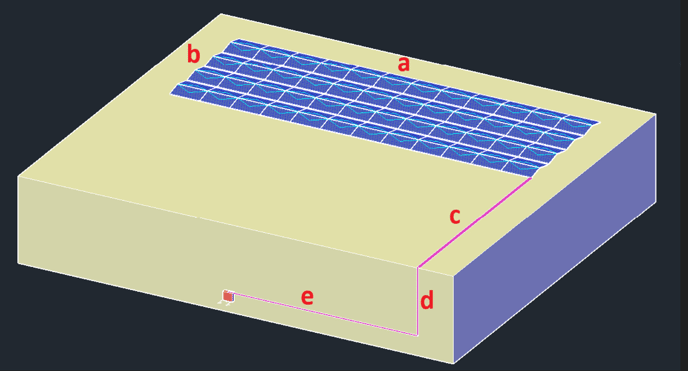Estimate cable lengths and sizes
Use Virto.MAX to estimate the right amount of cables and sizing for your project.
Once you have finalized your layout and added inverters using the Inverter Feature, proceed to the Components list to estimate both the required cable sizes and total quantities.
Within the Cabling section, the platform presents the applicable cable type, allowing you also to select an specific cable size for your calculation from the dropdown menu and set your desired safety margin percentage. The calculated cable quantity is automatically generated and included in the exported PDF report.

For a detailed explanation of the cable calculation methodology, please refer to the following section:
The DC cabling estimation calculation is designed to determine the average cable length per string in rooftop photovoltaic (PV) installations. This approach provides a practical estimation method for design optimization, cost evaluation, and voltage drop assessment, especially in early project stages where detailed calculations are not needed.

The algorithm considers the geometric layout of the PV array and the physical routing of cables between the modules and the inverter. The PV field is assumed to form a rectangular area defined by two dimensions: a, the length of the array, and b, the width of the array . The distance c represents the horizontal spacing on the roof between the nearest PV module and the roof transit. Once the cables exit the roof surface, they descend a vertical distance d, corresponding to the elevation difference between the roof and the level where the inverter or cable tray is installed. Finally, the cables continue horizontally for a distance e at the lower elevation until they reach the inverter location.
The estimation method assumes that each string has a set of modules connected in series, represented by the variable StringLength, and that each module has a known ModuleSize. Depending on the module mounting orientation (portrait or landscape), this parameter corresponds respectively to the shorter or longer side of the module.
To approximate the average DC cable length of a string, the algorithm considers two extreme cases:
- The longest cable path, measured from the farthest module in the array to the inverter: a + b + c + d + e + StringLength*ModuleSize
- The shortest cable path, measured from the closest module to the inverter: c + d + e + StringLength*ModuleSize
The average of these two distances represents the expected one-way cable length per string.
This approach captures all relevant cable routing segments: the horizontal travel across the roof (a, b, and c), the descent from the roof (d), and the final horizontal run to the inverter (e). The resulting value corresponds to the expected one-way cable length for one string.
By multiplying this value by the number of strings, the total DC cable length of the system can be estimated. When combined with the cable’s linear resistance, it also enables an estimation of voltage drop and power loss in the DC circuit.
This calculation therefore serves as a practical and consistent framework to approximate DC cabling needs in PV rooftop systems while balancing simplicity, accuracy, and adaptability to different array geometries and installation layouts.